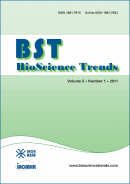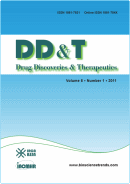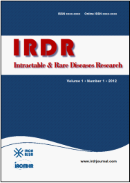Drug Discov Ther. 2025;19(3):174-183. (DOI: 10.5582/ddt.2025.01041)
Immune modulation and improved systemic performance of phosphate-functionalized nanogels for antifungal therapy
Vogel T, Yu Y, Keller T, Miyashita A, Munakata L, Suzuki R, Beilhack A, Groll J, Sekimizu K, Albrecht K
Phosphate functionalization of nanogels (NGs), originally designed to enhance interactions with fungal pathogens, also significantly influences their immune interactions and systemic behaviour. In this study, we investigated how phosphate-modified NGs perform as antifungal carriers in vivo using the silkworm model. We found that phosphate functionalization promotes faster internalization by granulocytes—immune cells functionally similar to mammalian neutrophils—highlighting a trade-off between antifungal activity and immune uptake. In parallel, phosphate-functionalized NGs exhibited prolonged circulation, more consistent biodistribution patterns, and reduced batch variability compared to unmodified NGs. These features contributed to superior and more reproducible in vivo antifungal efficacy when delivering itraconazole. Importantly, the biodistribution profiles observed in silkworms aligned well with previous mammalian data, further validating silkworms as an efficient, cost-effective model for early-stage evaluation of nanocarrier systems. Our findings underscore the importance of tuning surface functionalization to balance immune interaction and therapeutic performance, providing valuable insights for optimizing systemic antifungal nanotherapies.







